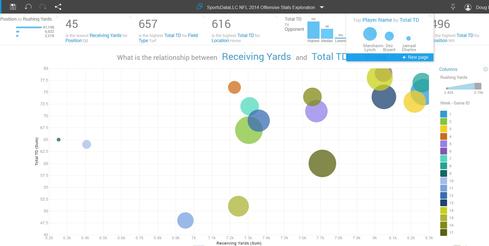Microsoft Power BI and IBM Watson Analytics attempt to make data analysis accessible to all. But don't confuse access to tools with reaching correct and valuable conclusions.

thumbnail visualizations along top of the Watson Analytics interface. Second, Watson Analytics offers predictive capabilities that can consider an outcome, such as falling revenues, and "automatically and intelligently" surface the most important predictors of that condition, he said.
Hearne's observation fits the wise old warning that correlation does not imply causation. But what if all you have is a collection of sales data and no clue as to what the competitors are doing?
"We're working on the ability to let the user know that they don't have enough information," Hearne said, "If you use the tool today, you'll see the beginnings of that capability when it points to the strongest predictor available but notes that the strength of the prediction is only 39%."
[ Want more on this topic? Read Analytics Showdown: Should Apps Be Simpler, Or Smarter? ]
Even Watson Analytics' suggestions and aids are only valuable if the user is motivated to explore and discount their own biases and preconceived ideas until they see all the puzzle pieces fall into place.
Our recent InformationWeek 2015 Analytics, BI, and Information Management Survey offered plenty of insight on the trend toward simple tools that are easy to use as well as smart tools that can guide users to the right interpretations. The consensus is that tools need to be easy and smart, and our data shows that organizations are moving away from BI standardization and toward experimentation. Power BI, Watson Analytics, Tableau, and other new tools are shaking things up. But the journey to data democratization continues.
No vendor has really nailed simple and smart. Power BI and Tableau, for instance, seem easy (based on my casual use of these products), but they won't tell you that an important predictive data type is missing or that a conclusion has a certain confidence level, as Watson Analytics can do.
Watson Analytics, in contrast, is more intimidating than Tableau and Power BI (as evidenced by the many how-to videos you'll encounter on the site). The problem I see with surfacing so many possible views and avenues of analysis is that neophytes (such as myself) will long for the answer on a silver platter. That's not going to be served up by tool or system.
Organizations have to realize that arming everybody with tools -- and, inevitably, upgrading many of them to paid tiers of service -- won't necessarily unleash a wave of data-driven decisions or, more importantly, correct decisions. There are very good reasons why BI and analytics have been the domain of data-savvy analysts who can vet and set up reports and shared dashboards.
There can be no substitute for having experts and power users who understand the business context, who are familiar with the data, and who have a degree of independence from this department or that department so they don't have a vested interest in reaching particular conclusions. That doesn't mean we have to wait in queue for answers from experts. It means we have to balance self-service with oversight and smart guard rails or aids that help the rest of us avoid drawing incorrect conclusions.
Attend Interop Las Vegas, the leading independent technology conference and expo series designed to inspire, inform, and connect the world's IT community. In 2015, look for all new programs, networking opportunities, and classes that will help you set your organization’s IT action plan. It happens April 27 to May 1. Register with Discount Code MPOIWK for $200 off Total Access & Conference Passes.
About the Author(s)
You May Also Like







